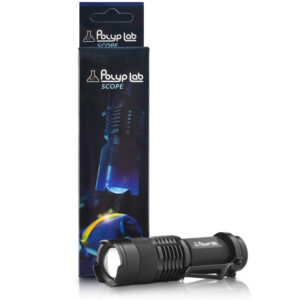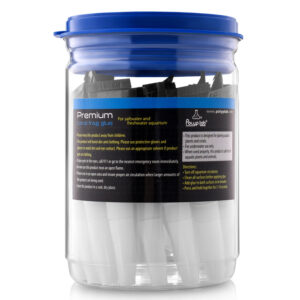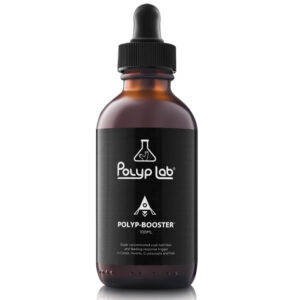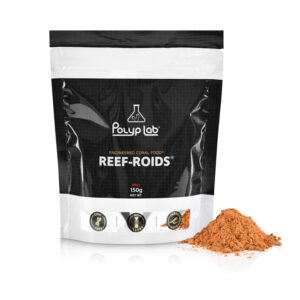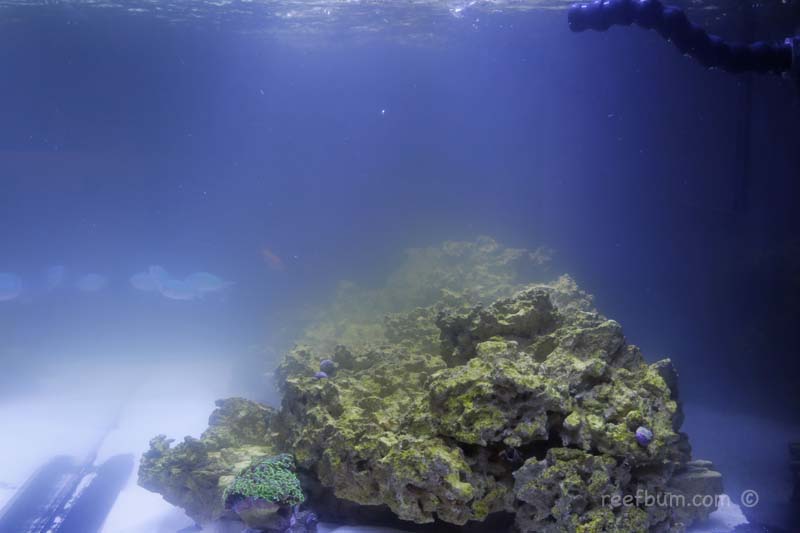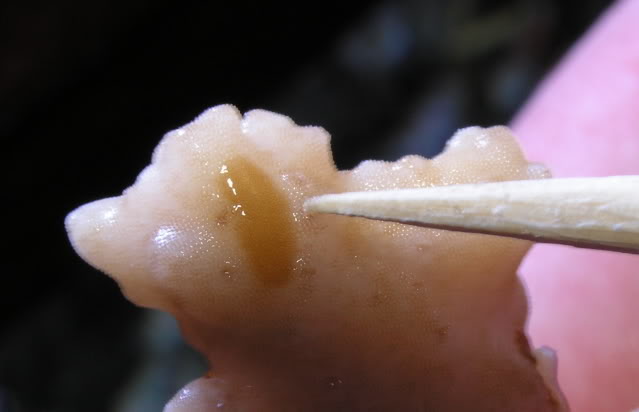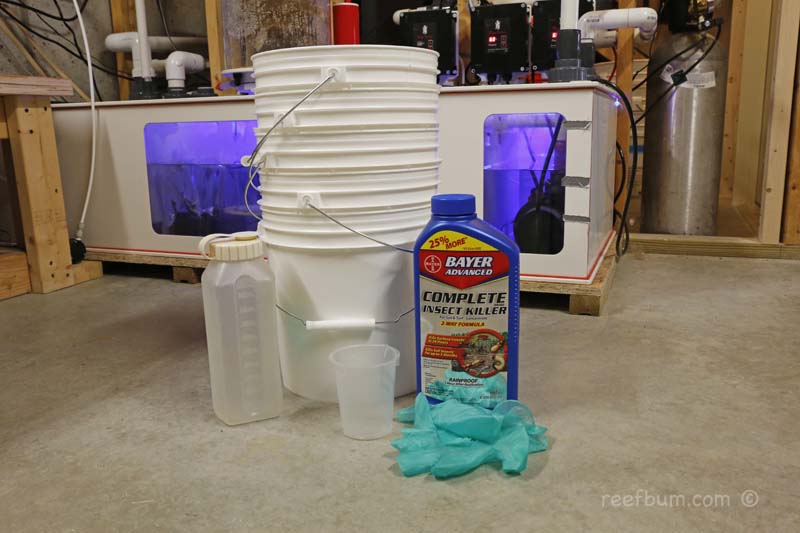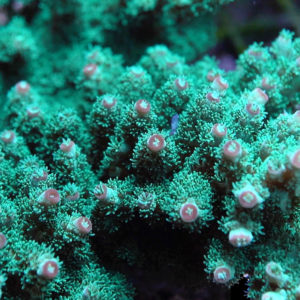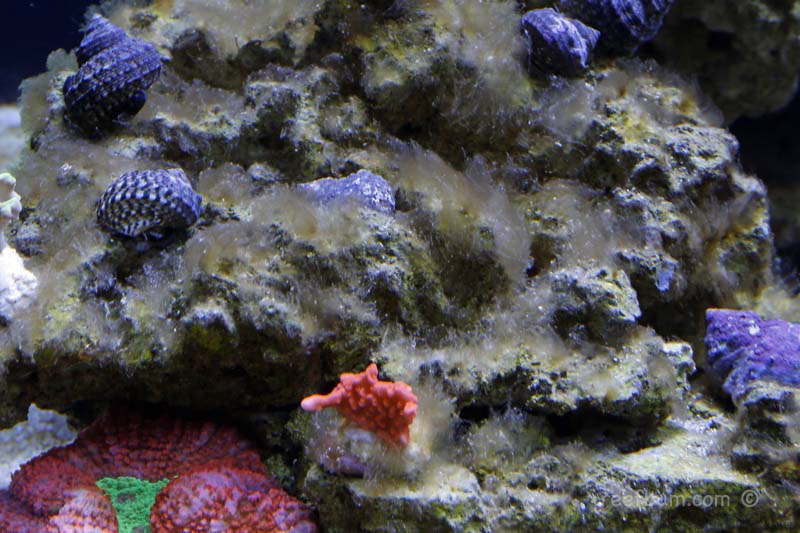
How To Eliminate and Prevent Diatoms in a Reef Tank
Ok, first of all, what are they? Well, diatoms are a brown algae that typically appear in a reef tank that has just completed its cycle but they can also appear in an established reef tank. They can cover sand, rock, pumps, glass, you name it. Diatoms look ugly but in most cases they are harmless so the key is to not panic when they appear.
Diatoms feed mainly off of silicates but also consume dissolved organic compounds, phosphate and nitrates. Unfiltered tap water can contain silicates and is a good way to jump start a bloom if you use it to mix salt or to replace water that evaporated from the tank. The best way to prevent this from happening is to filter water through a RODI unit, although you can still get a diatom bloom when using RODI if the cartridge that removes silicates expires, something I experienced first hand with my new 187 gallon tank. So be diligent, monitor the cartridges and replace them when necessary.
Silicates can also make their way into a tank via additives, salt mixes and even sand not meant for aquarium use. The key here is to find the source and eliminate them. If you don’t the diatoms will continue to reappear. You do want to be sure you have silicates so I highly recommend doing an ICP test to verify they are present.
Options For Remediation
There are a few things you can do to remove silicates and the other elements that feed diatoms. Large water changes, heavy protein skimming and the use of GFO will help. When a bloom is out of control it may be necessary to remove diatoms manually, something I ended up doing to combat the major outbreak in my tank. I used a home-made suction-like device to pull the really large clumps from the rock and I also added a couple of dozen Astrea Turbo snails to help mow down what remained (Trochus snails are good as well). Both methods worked to a certain degree but to really knock out the problem I turned the lights out in my tank for three days.
Light fuels algae growth so going dark for three days took the diatoms out at their knees. 99% of the diatoms were gone after this period and the 1% left were in a weakened state, making it much easier to remove them manually. I admit this was a radical step but felt it was necessary due to the severity of the bloom.
Be Mindful of Corals During Treatment
One obvious question is whether this procedure will hurt corals. Keep in mind that there are natural “black out” periods occurring over days in our natural reefs during storms so, in theory, corals are used to this sort of thing. Corals can also be in the dark for up to a couple of days when shipped.
How did my corals fare? Well, all of my SPS frags made it through the blackout fine, although a couple of pieces exhibited some slight color loss. This was not unexpected since frags are more prone to sudden changes in the system versus full grown colonies. The LPS corals actually looked better after the blackout, with greater polyp extension on my hammer and frogspawn corals. My only causality was a small black and white maxima clam.
I do advocate caution when trying this method. It is a good idea to observe the tank during the blackout to make sure corals are not reacting badly and it is also wise to slowly acclimate the corals back to the tank lights. I have both T5s and metal halides so I turned on just the T5s the first day after the blackout and then re-introduced the halides the following day.
Diatoms – Patience is a Virtue
As I touched on in the beginning, diatoms are typically harmless to a captive reef and can be beaten once their food source expires. Once you put the kibosh on the source, the outbreak should last a couple of weeks so just be patient and it will pass. For major outbreaks you may want to consider the three day blackout.
To prevent their return, practice good aquarium husbandry by doing regular water changes, keep the substrate clean, don\’t overfeed the fish, ensure your skimmer is running at an optimal level and rinse out filter socks and sponges on a regular basis.
Additional Resources
If you would like some help with a new tank build, including help designing a custom aquarium, or help re-configuring your current setup then you can visit this page for more information. And if you are looking to add some equipment, I do sell GHL, Pax Bellum, Reef Octopus Calcium and Kalk Reactors and Royal Exclusiv products, including Dreamboxes, which is the equipment I use and recommend. I also sell Reef Brite metal halide and LED fixtures as well as Maxspect & IceCap Gyres.
As for additional insights and information, please explore my many other reef tank and SPS related articles as well as my YouTube channel. For an even deeper dive into reef tank care you can check out my Reef Keeping Master Class. This online course is an immersive and one of a kind educational tool designed to help reef aquarium hobbyists build and maintain a beautiful SPS reef tank. The course is a series of video presentations with some supplemental video from my YouTube channel. There are also quizzes to help students retain and understand the information presented in the course.
Need some frags…..I can help with that as well 

